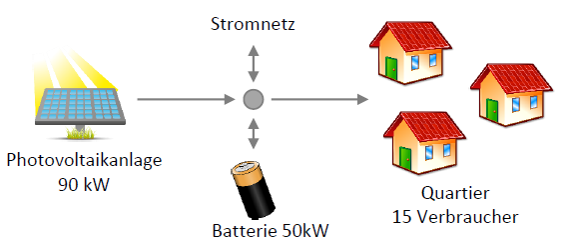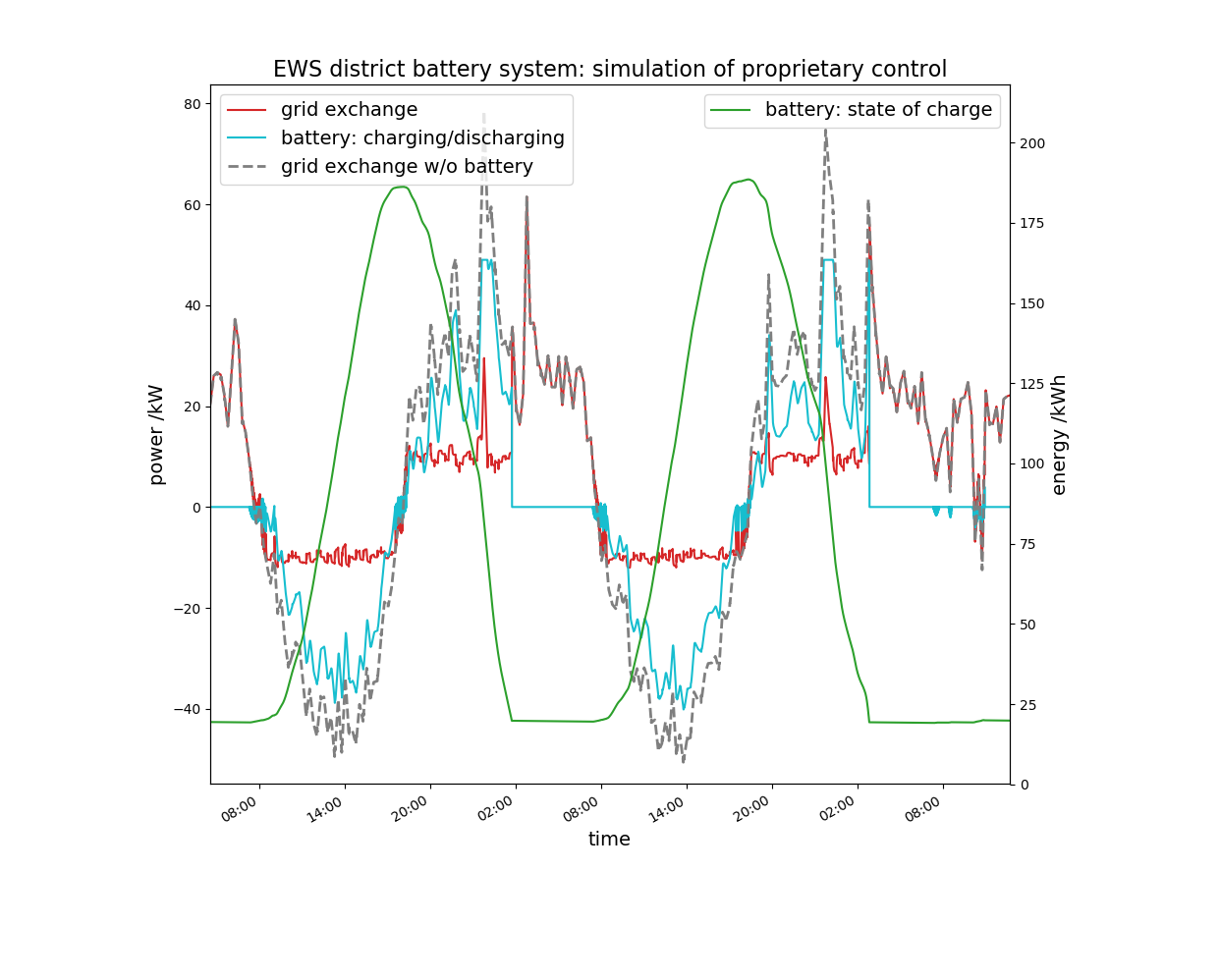Intelligent control of a district battery system
By taking control of the system, our consortium partner may adapt the operation of a battery - integrated in his electrical distribution system - according to his needs.
A district battery system based on Lithium-Ion technology, a photovoltaic plant and 15 houses form a unit, which exchanges energy with the electrical distribution grid. The control mode provided by the battery system supplier optimizes the self-consumption of the fore-mentioned unit, which is not the preferred way of controlling the system from the point of view of the distribution system operator, neither under technical nor under economical aspects. The optimization of the self-consumption focuses on the average energy exchange with the grid while the distribution grid operator is more interested e.g. in the minimization of power peaks at the grid connection.
- Integration of a control device hardware- and software-wise into the IT environment of the distribution grid operator to control the district battery system and to evaluate its operation
- Definition of proprietary control algorithms, e.g. to reduce power peaks at the grid connection point or to implement a business model – designed at our institute – with central storage capacity for a private photovoltaic plant operator
- Implementation of the algorithms in the control device, pilot operation, evaluation and optimization
Based on measurement data of the district battery system, an analysis of today’s operation was performed and characteristic values for the design of new algorithms were extracted. First variants of control algorithms were programmed and validated in a simulation environment. A suitable control device was evaluated and integrated into the IT environment of the distribution grid operator. Starting from June 2020 a pilot operation with various control algorithms will be executed on the district battery system.
Client | |
Project lead and execution | |
Research partner | |
Duration | February 2020 to June 2021 |
Funding | |
Project team | FHNW: Thomas Tarnowski (Lead), Martin Geidl, Diego Mäder |




